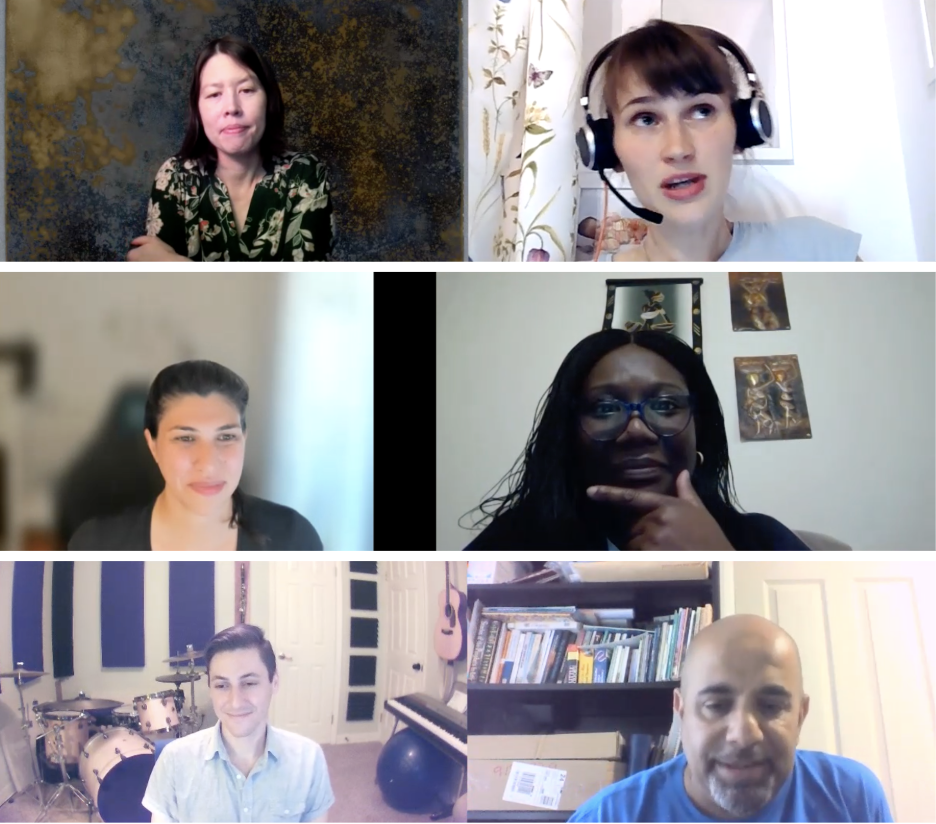HP DAAS (Device as a service) - Designing a Hybrid Workforce Platform
Role: Design Lead (Service Design, Design thinking, strategy, user research, interaction, UX design, prototyping & testing)
Time: 12 weeks
OVERVIEW:
The COVID‑19 pandemic permanently changed how and where people work. Millions of employees now split their time between the home and the office, creating new demands on IT teams to provision, secure and support devices across a distributed workforce. HP responded by expanding DaaS+ (Device as a service) into a subscription‑based managed service designed to simplify IT operations, secure devices and empower employees to work effectively from anywhere.
As Design Lead, I co‑led a cross‑functional team and helped shape HP’s managed services strategy from inception through launch. My work spanned service design, user research, strategy definition, prototyping and guided alignment across business units, and partnered with &US Consulting to validate the service vision that positions HP to capture a multi‑billion‑dollar market opportunity.
MY ROLE & LEADERSHIP:
Team Leadership: Co-led a design team of 4, mentoring and aligning them across product lines.
Strategic visioning: Partnered with leadership across Print, Lifecycle, Hardware, Services and Commercial to define DaaS+’s value proposition and align it with HP’s broader commercial strategy.
Cross‑functional alignment: Coordinated across product, engineering, research and design teams—often navigating meetings with 50–100 stakeholders—to prioritise features and ensure a cohesive user experience.
Research leadership: Led research planning, synthesis and insights generation. This included stakeholder interviews, customer interviews, and analysis of existing research to validate the service concept.
Workshop facilitation: Designed and facilitated design‑thinking workshops to co‑create solutions with stakeholders and customers. Activities included empathy mapping, assumptions mapping and service blueprinting.
Systems thinking: Built service blueprints and customer journeys that connected the user experience with backend systems and integrations.
Design execution: Oversaw design from early concepts to detailed workflows and prototypes. Partnered with visual design to implement HP’s design system and collaborated with engineering on proof‑of‑concept development.
BUSINESS CONTEXT
IT strain: 84% of organizations were still adapting to new operating models.
Demand for hybrid work: 72% of employees wanted flexible remote work options.
Organisations struggling with outdated models:: 78% of customers wanted easier device sourcing.
Security as a top consideration: 88% of IT decision-makers named endpoint security a top priority.
BUSINESS GOAL:
Deliver a cohesive, automated, secure, and insight-driven service that helps mid-market companies (100–1,000 employees) thrive in the hybrid era.
DESIGN CHALLENGE:
How might we design a digital service for mid‑market companies (100–1 000 employees) that empowers IT decision‑makers to support a hybrid workforce effectively?
THE PROCESS
STAGE 1
DISCOVERY & VALUE PROPOSITION
Stakeholder & user research: Conducted stakeholder interviews and user interviews with IT decision‑makers, business leaders and hybrid workers to understand pain points. Synthesised existing research and identified gaps.
Personas: Developed personas for the Hybrid Worker, IT Decision‑Maker and Business Leader. These archetypes guided decisions throughout the design process.
Co‑creation workshops: Facilitated empathy mapping, assumptions mapping and alignment sessions with cross‑functional stakeholders using Miro. These sessions surfaced assumptions and priorities and aligned teams around the problem.
Service blueprinting: Collaborated with product leads to map customer journeys and backend system integrations, ensuring a holistic view of the service ecosystem.
Concept validation: Tested early concepts via mock webpages and service prototypes with customers. Initial feedback showed confusion—customers had never seen a service like this before—but once the concept was explained, interest and excitement were high. Feedback also revealed that IT decision‑makers often recommend solutions but business leaders make the final purchasing decisions, guiding us to tailor the messaging accordingly.
STAGE 2
DESIGN & PROTOTYPE
Iterative ideation: Led ideation sessions and produced multiple prototypes (15+) for the IT admin portal. Focus areas included employee lifecycle monitoring, proactive insights, and streamlined employee onboarding.
User testing: Conducted frequent qualitative testing to refine workflows. For example, we used prototypes built in Figma to gather feedback on the portal’s navigation, data presentation and ease of onboarding.
Collaboration with engineering: Integrated engineering early in the process. Engineers built proof‑of‑concepts alongside design iterations to test feasibility and ensure alignment.
Visual & interaction design: Finalised user flows and collaborated with visual designers to apply the HP design system (Veneer), ensuring accessibility and cohesive interactions.
IMPACT
Extensive research: 100+ hours of customer research across interviews, surveys and testing sessions.
Collaborative workshops: Over 40 design‑thinking workshops involving leadership, product, engineering and customers.
Prototyping cadence: Created and iterated on 15 prototypes, narrowing down to final workflows for the IT admin portal.
Market validation: The service concept validated a $30 billion industry opportunity, reinforcing HP’s pivot towards service‑based offerings.
Organisational change: The project aligned multiple business units around a shared vision for managed services and contributed to the growth of the HP design system and design‑thinking toolkit.
KEY LEARNINGS:
Embrace complexity: Designing a service spanning hardware, software, security and support required deep systems thinking and collaboration across multiple business units. Understanding dependencies and aligning teams was as important as the design work itself.
Lead through influence: Successfully leading a team of designers and aligning 50+ stakeholders required clear communication, facilitation skills and the ability to translate vision into actionable plans.
Customer‑centric strategy: Continuous research and testing ensured that the service met real needs. Recognising that IT decision‑makers influence but do not always control purchasing decisions helped us tailor our messaging and product features appropriately.







